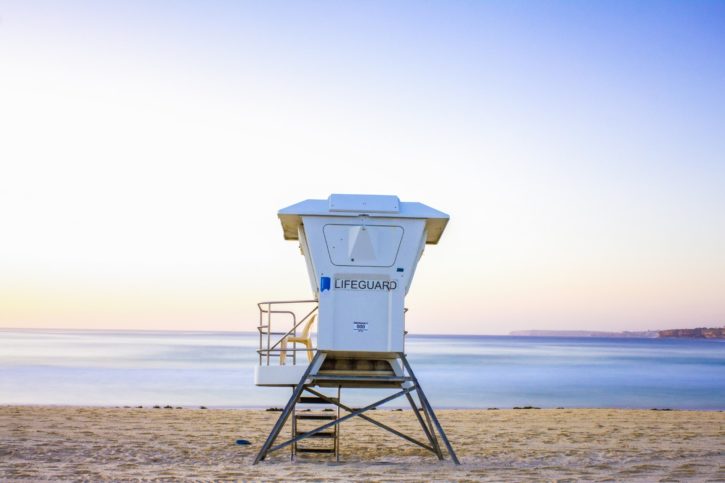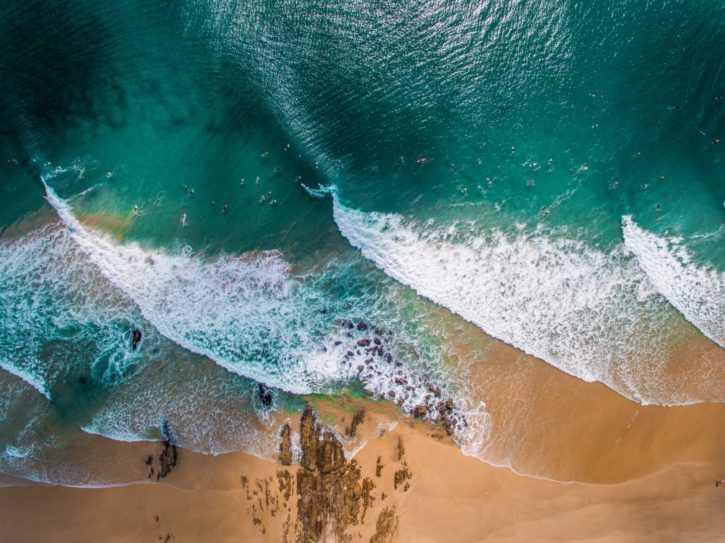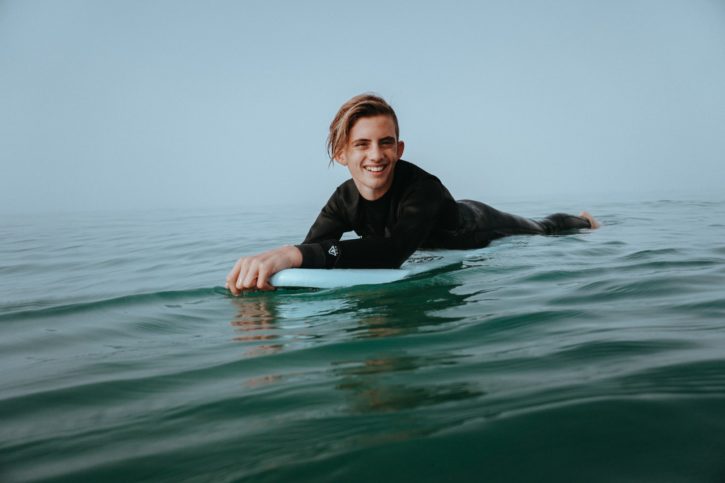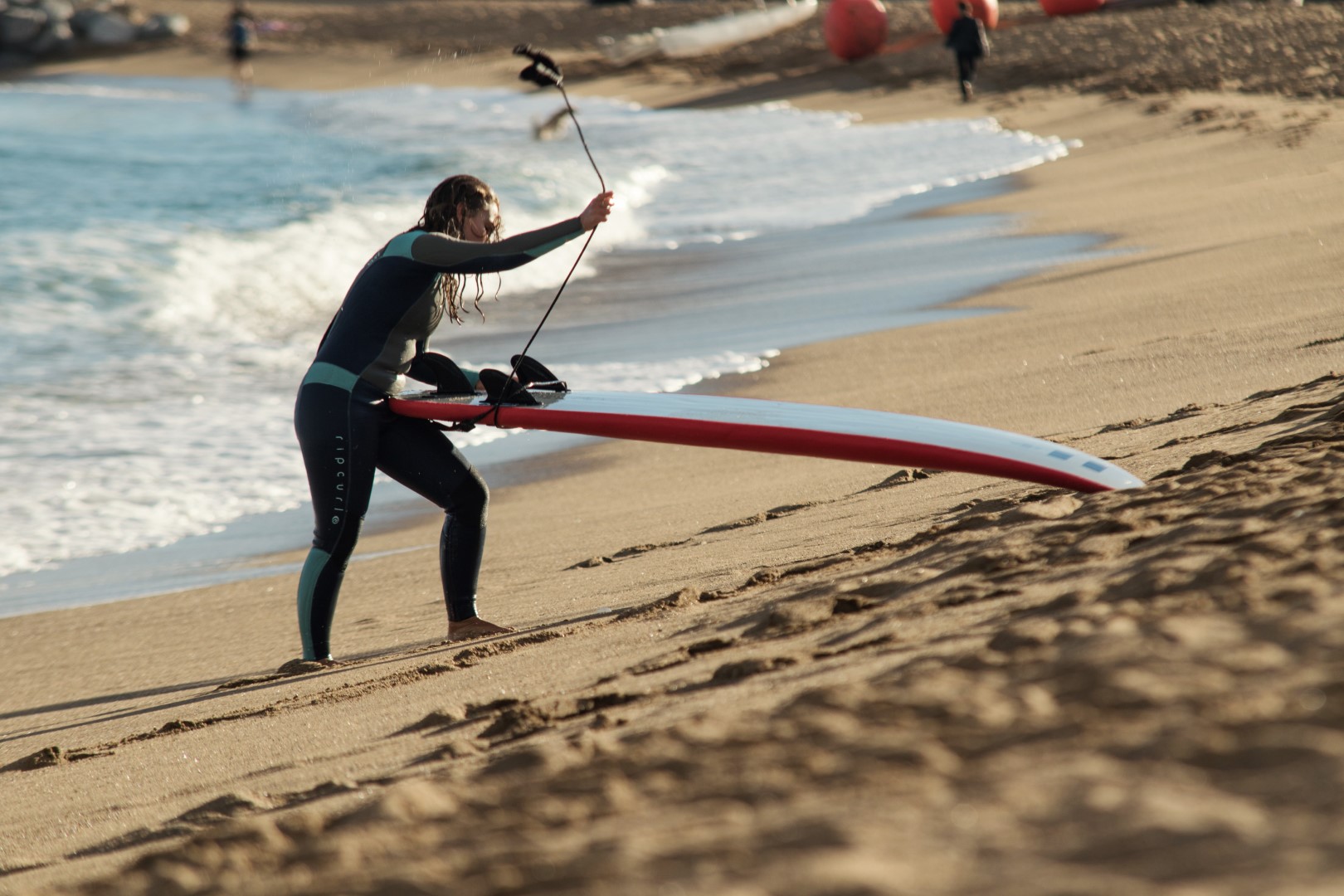Surfing is one of those sports that can be enjoyed in countless different forms, and even after a lifetime of practice, there are still new skills to be learned. It truly is a sport that gives back based on what you put in.
The barriers to entry are low, you don’t need a lot of expensive equipment and waves are free. There are however some things you need to know as a beginner that will make your experience significantly better, and ensure that you are getting the most out of each surf.
1 – Stay Safe
The ocean can be a dangerous place. You should never undererstimate the power of the ocean. Not only can you risk death or serious injury, but even if you escape from a bad situation unscathed, the experience can be scarring and will inhibit your surf progression.
Fortunately it does not have to be dangerous, and you can educate yourself on how to stay safe and easily avoid these situations. If your local surf beach has lifeguards I recommend talking to them. Surf lifeguards are passionate about the ocean, and their job is to help people enjoy the ocean, not to prevent access.

My top advice on surf safety is:
- Know how to swim. This is compulsory and you should learn in a swimming pool before attempting to surf.
- Learn about Rips. A Rip is a strong current of water heading away from the beach and out to sea. You need to know how to spot a rip before getting in the water, and how to react if you do get caught in a rip.
- Rocks and Shore Break. Understand what surface the waves are breaking over (rocks or sand) and how deep the water is. Spinal injuries are far too common with inexperienced surfers and can be easily avoided.
There are plenty of resources online. I recommend you start with the Surf Safety series published by Surf Life Saving Australia.
2 – Where you should surf
Different surf beachs and breaks attract different levels of surfers. As a beginner it is important that you know suitable surf breaks for your skill level.
As discussed above, safety is the number 1 priority, and beginner surf breaks are going to be the safest.

A beginner surf break should have:
- Sandy bottom (not rocks or coral).
- Gentle waves. This is defined by how quicly the ocean floor rises to the beach, and a more gentle gradient will have more gentle waves.
- Surf Life Saving services. Many countries where surfing is popular will have surf life saving services during peak season. Whilst you will hopefully not need their rescue services, the lifeguards will be able to help you recognise safe areas to surf, away from dangerous rips and currents.
A good place to start is Surfline, a surf forecast website which includes spot guides for thousands of surf breaks globally. Explore your local area and look for beach breaks.
The best way to find a suitable break is to turn up and take a look. But what are you looking for?
- Are there other surfers out?
- What kind of boards are they on? Shortboards or Longboards?
- What level are the surfers? Beginner / Intermediate / Advanced?
- Are there lifeguards on duty?
- Are there any surf lessons being run or advertised?
If you see that there are other surfers of a similar ability level who look comfortable in the water then this is usually a good indication that the break is suitable. The more regularly you visit a surf break, the better you will get at knowing the suitability for your level.
3- When should you go surfing?
One of the greatest challenges in surfing is that no two waves are identical. This is also the crucial part of surfing that will keep you coming back for more, and stoke an addiction that can last a lifetime. There is no such thing as boredom when it comes to surfing and progression, regardless what style of wave riding you choose to adopt.
Not only will every wave be unique, but the surf conditions can change significantly hour by hour, day by day and season by season. As a beginner, it is important to study how your local surf breaks perform, as what can provide a great learning experience one day could be a frustrating and demoralising session the following day. Surfing should always be a positive experience, although some days we have too look a bit harder to see the positive!
Everytime you go for a surf, make a point to check the following measurements. You can do this via a surf forecast website, or just from your own observations.
- Wind – What is the wind strength and direction? Offshore (blowing off the shore out to see) is good, Onshore (blowing onto the shore from the sea) is bad.
- Swell – What is the swell size and direction?
- Tide – Was the tide High / Mid / Low? Incoming or Outgoing?
These three things are the predominant variables that will impact the surf. Every surf break responds differently so I cannot provide you a range to look for, you need to learn your local break.
For instance, a beach with a sheltered headland might have great little waves despite a large swell, and a beach with large cliffs will handle a strong wind better than a beach surrounded by flat land.
Take note and learn what surf breaks perform best in certain conditions. If you have a great surf, you want to make sure you come back to the same break when the conditions are next the same.
4 – Using the right surfboard
Please take it from me, I learned the hard way that trying to learn on a surfboard that you think is cool, but completely impractical for a beginner is a terrible idea. I wasted years of surfing time where I progressed far too slow due to poor board choice.
As a beginner you need a board that allows you to catch as many waves as possible, is safe (e.g. soft edges & fins), durable and inspires confidence.
Check out the article below where we go into detail reviewing the best surfboard for beginners.
Surfing is a time-intensive activity, and even if you can’t afford to buy the perfect board, I strongly recommend you jump on Craigslist/Gumtree/Facebook Marketplace etc and pick up a used soft top longboard instead of borrowing that old fiberglass shortboard from your mate. The cost is a small price to pay for the return you will get once in the water.
5 – get protected
When you come out of the water after a surf, you might be tired, but you should be happy and comfortable. If you are exiting the water shivering cold, pink with sunburn, or unable to lie on your front due to your sore ribs then you are doing it wrong.
Fortunately, one piece of equipment can protect you from all three of these ailments. A wetsuit will protect you from cold water, sunburn and bruises or rashes from you surfboard.
For those who are lucky enough to live somewhere with warm enough water that a wetsuit is not required, then I still strongly recommend that you use a rash top, or at the very least a t-shirt. We have all seen the magazine photos of tanned surfers in board shorts and small bikini’s, however if you follow the social media of these pro surfers you will see that even they often cover up when out for a casual surf.
It is also important to use good sunblock on all exposed parts of your body, especially your face. Water acts as a mirror, and paddling around in the surf will cause sunburn quicker than you expect, this is why a lot of surfers have heavy zinc sunblock across their noses and face.
6 – Practice on land
When you think of practicing on land you are probably picturing a surf lesson practicing their pop-up motion on the beach right? There is nothing wrong with this, and it makes sense to practice this when you are first starting out, but as you progress your learning you need to practice other parts of the surfing movements. Ideally in a way that his more fun and less embarrassing!
There are three activities which I do regularly on dry land that help my surfing, and will help you too, regardless of what level of surfer you are.
Indo Board
An Indo Board is great for improving your balance and training your muscles. Every beginner has the same two faults in their surfing. Standing too tall, and looking down. Getting on a balance board is great for building up some muscle memory on balancing in a lower position, and learning to look up whilst doing it.
Yoga
Next time you watch a video segment of a professional surfer, take a close look at just how much they move their bodies. If you sit at a desk all day it is almost a given that you have tight hamstrings and some form of back pain. In order to surf well, your body needs to be able to move freely and without inhibitions.
Add a bit of Yoga to your fitness regime. Whether that is getting to a class, or at home with a quick search on YouTube for Yoga for Surfers.
Many pro surfers incorporate Yoga into their routines. Take a look at WSL pro sufer Malia Manuel below and try telling yourself that stretch doesn’t look like it would feel nice!
Surf Skateboard
There are a few skateboard companies now making dedicated surf trainers. My personal favorite is the Swelltech Surfskate, which mimics the movement of a surfboard with its unique front truck swing arm.
If you are anything like me, then skateboarding is just not something you do. Concrete and skin were not made to mix. Well forget about that, these boards are nothing like a conventional skateboard, and are designed entirely for surf training. Best enjoyed at low speed on flat or gently sloping ground where you can practice the motions of surfing with low risk.
The best thing here is the wave is consistent, the only thing that changes is you. This really is the ultimate practice machine, and will have you progressing from beginner to advanced so much faster once you use the skateboard to learn about speed generation and pumping.
7 – Observe & learn
Unless you are a pro surfer, there is a good chance that you will regularly get the opportunity when surfing to observe people who are better surfers than you. Next time you are out in the surf or just at the beach, take some time to observe the surf and other surfers in detail.
The more observant you become, the more you will know what to look for and pick up new ideas to try. The lessons you take from this will depend on what level your surfing is at, and as a beginner, you should be focussing on wave positioning (where other people are catching waves) then moving into direction and speed generation (how other surfers are staying ahead of the whitewater).
There are tons of high quality online tutorials available for free, and these are a great use of your time. 20 minutes on YouTube could save you hours of trial and error in the water.
8 – Take a lesson
Unless that mate who is teaching you to surf is a pro or advanced surfer, you should step away for a session and take a proper surf lesson.
Stay away from tourist destinations where they offer you a photo with your lesson, or promise to get you standing on a wave. You don’t want a ‘lesson’ that is really just an instructor pushing you on a giant board into a tiny wave where no skill is required. You need to work with a surf school and instructor who are going to teach you core skills. A good instructor for a first time lesson will always begin a tutorial on surf safety and how to be aware of hazards.
Learning to stand-up is actually the easy part of surfing. The lifetime of practice is spent acquiring the ability to read waves, and how to use the energy of the wave. A good surf lesson will focus on giving you the skills to advance your surfing on your own.
9 – Have Fun
Surfing has the ability to provide a positive experience like no other. You are imersed in nature, with very little man made equipment required to harness the waves. There is a reason that surf culture is famous for its layed back and sometimes reckless attitude. For many of us, surfing really is cleansing for the mind. I do many action sports, but Surfing is the only one in which I can turn off and just enjoy the moment.
Unfortunately, the ocean can also provide some unpleasant experiences. Cold, discomfort, fear and failure to name a few. It is important to be realistice about your goals when surfing, do not compare one surf to the next as the waves and conditions will not necessarily be comparible.

If you enter the water without pressure, and just the expectation to enjoy the environment then you will see the positive in the situation. Regardless of how successful your surf is, you are improving your fitness and water awareness everytime you paddle out.
I have had some terrible surfs, where for whatever reason I just sucked. It is easy to get angry or upset in this situation, but the alternative is to look at what you are gaining from being in the water and find a way to have fun. Sometimes this even means bringing your board in to the beach and heading back out for a bodysurf!
10 – rinse and repeat
You cannot expect to surf a handful of times every summer and improve. Surfing is a lifestyle, and it requires a commitment if you wish to advance.
Fortunately, learning to surf is a self fulfilling cycle. The more you practice, the easier it becomes and the better you get. The better you get, the more fun you have. The more fun you have, the more you want to go surfing!
Thanks for reading, and welcome to the surf community.
